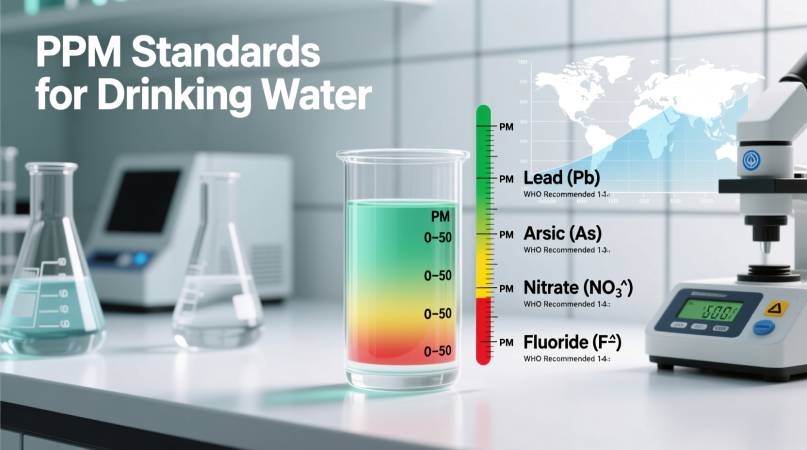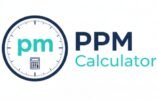
Global PPM Standards for Drinking Water
Clean, safe drinking water is a universal right—and understanding PPM (parts per million) standards is key to ensuring the water you drink is truly healthy. Around the world, organizations like the World Health Organization (WHO), the US Environmental Protection Agency (EPA), and local authorities set PPM-based limits to protect public health.
In this guide, I’ll walk you through what PPM means for water, highlight global benchmarks, and provide practical tips for testing and interpreting your water’s PPM results—wherever you are.
Why PPM Matters in Drinking Water Quality
What Does PPM Mean in Water Testing?
PPM stands for parts per million, a unit describing the concentration of a substance—like minerals, metals, or chemicals—in water. For example, a lead level of 0.01 ppm means there is 0.01 milligram of lead per liter of water. Because even tiny amounts of contaminants can pose health risks, PPM allows scientists, regulators, and consumers to precisely define and control water quality.
Why Are International Standards Important?
International PPM standards help:
- Protect public health by limiting exposure to harmful contaminants.
- Guide water treatment facilities in meeting safety targets.
- Empower consumers to test and interpret their water quality.
For more on how PPM is used in testing, see PPM for Water Testing.
Key Global PPM Standards and Guidelines
World Health Organization (WHO) Drinking Water Guidelines
WHO guidelines are recognized worldwide and form the basis for many national regulations, especially in countries developing or updating their own standards. Here are some key WHO PPM limits:
| Contaminant | WHO Guideline (ppm) |
|---|---|
| Arsenic | 0.01 |
| Lead | 0.01 |
| Nitrate (as NO₃⁻) | 50 |
| Chlorine (free) | 5 |
| Fluoride | 1.5 |
| TDS | <1,000 |
See Safe PPM Levels for Drinking Water for more details.
United States EPA Standards
The US EPA sets enforceable Maximum Contaminant Levels (MCLs) for public water supplies:
- Lead: 0.015 ppm (Action Level)
- Arsenic: 0.01 ppm
- Nitrate (as N): 10 ppm
- Fluoride: 4 ppm (MCL), 2 ppm (secondary)
- TDS: 500 ppm (secondary standard)
EPA standards balance health protection with the feasibility of removal. Use the MG/L to PPM Calculator for quick conversions.
European Union (EU) Drinking Water Directive
The EU Drinking Water Directive (EU 2020/2184) sets strict limits for member states, including:
- Lead: 0.01 ppm
- Nitrate: 50 ppm
- Fluoride: 1.5 ppm
- TDS: 650 ppm (recommended)
For more global comparisons, check the PPM Conversion Table.
South African and Other National Standards
Countries often adapt WHO or regional guidelines to fit local conditions:
- South Africa (SANS 241):
- TDS: <1,200 ppm (acceptable), <300 ppm (ideal)
- Nitrate (as N): 11 ppm
- Lead: 0.01 ppm
Explore more at PPM for Drinking Water in South Africa.
How to Interpret PPM Results in Drinking Water
Testing and Comparing Your Results
When you test your water using a TDS meter, chemical kit, or laboratory service, compare your results to the standards above. If your readings are above recommended PPM limits for any contaminant:
- Take action: Consider certified water filters or professional treatment.
- Retest after treatment: Ensure your solution is effective.
- Consult your local water authority if problems persist.
For a detailed walkthrough, see How to Measure PPM in Drinking Water.
Tips for Accurate PPM Testing
- Test regularly: Water quality can change due to weather, repairs, or infrastructure issues.
- Use the right tool: TDS meters are great for total dissolved solids; use targeted kits or lab tests for specific contaminants.
- Record your results: Track changes to spot trends and potential problems early.
For best practices in measurement, visit PPM Best Practices for Lab Work.
What If My Water Exceeds a Standard?
- Identify the source: It could be pipes, local groundwater, or treatment plant issues.
- Install certified filters: Select ones that target the specific contaminant.
- Retest after filtering: Confirm the effectiveness of your treatment.
See PPM Calculation Mistakes for troubleshooting and tips.
Frequently Asked Questions
Is 1 mg/L the same as 1 ppm in water?
Yes, for most water samples, 1 mg/L ≈ 1 ppm.
Are standards the same everywhere?
They’re similar but not identical. Always check your local and national regulations for compliance.
Can I test PPM at home?
Yes, with TDS meters or chemical kits for general water quality. Use labs for detecting specific heavy metals or contaminants.

Dr. Robert is an industrial chemist specializing in process control, water purification, and quantitative chemical analysis. She has worked with environmental labs and manufacturing facilities to optimize solutions in parts-per-million (PPM) precision and safety compliance.
At PPMCalculator.com, Dr. Robert ensures the accuracy of each calculator and guide through peer review and data validation. Her mission is to make chemistry tools more reliable for engineers, researchers, and students worldwide.
Follow her professional updates on LinkedIn or contact via info@ppmcalculator.com. For More details, Click here
